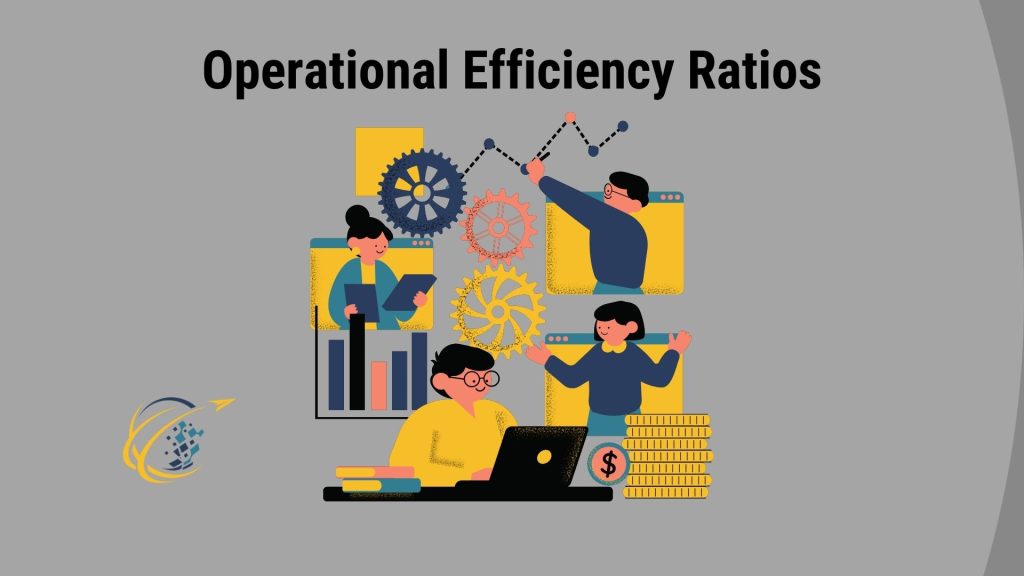Operational Efficiency Ratios are critical metrics used to evaluate a company’s effectiveness in managing its resources and operations. These ratios provide insights into various aspects of business performance. This includes how well a company utilizes its assets to generate revenue and maintain streamlined operations. By analyzing these ratios, management can gauge the operational health and productivity of an company. This helps to identify areas for improvement and strategies for cost reduction.
Common types of operational efficiency ratios used in business analysis include the Inventory Turnover Ratio. This measures how frequently a company sells and replaces its inventory within a given period. This ratio is vital for assessing the efficiency of inventory management practices. Another essential ratio is the Accounts Receivable Turnover. This indicates how effectively a company collects debts from its customers, reflecting on its credit policies and cash flow management. In addition, analysts often examine the Asset Turnover Ratio to determine how efficiently a company uses its total assets to produce sales. This provides a clear picture of overall operational effectiveness.
Understanding these ratios is crucial for businesses aiming to optimize operations, reduce costs, and enhance profitability. They allow companies to make informed decisions based on quantitative data, aligning operational activities with strategic business goals. Furthermore, comparing these ratios against industry benchmarks enables businesses to assess their competitive position and identify best practices. By regularly monitoring operational efficiency ratios, companies can stay proactive in managing performance. This ensures long-term sustainability and success in their respective markets.
Key Operational Efficiency Ratios
Key Operational Efficiency Ratios provide crucial insights into a company’s operational health and its ability to efficiently manage resources. Among these important metrics, the Inventory Turnover Ratio is essential for businesses that stock goods. This ratio is calculated by dividing the cost of goods sold by the average inventory during a period. A high Inventory Turnover Ratio indicates efficient management. This shows that a company is effectively selling and restocking its goods, which minimizes holding costs and maximizes profitability.
Another vital ratio is the Accounts Receivable Turnover, which measures how quickly a company collects payments from its customers. It is calculated by dividing total net sales by the average accounts receivable. This ratio helps businesses understand the effectiveness of their credit and collection policies. A higher turnover rate suggests that the company efficiently collects its receivables. This enhances its cash flow and reducing the risk of bad debts.
Lastly, the Asset Turnover Ratio offers insight into how effectively a company uses its assets to generate revenue. This ratio is determined by dividing net sales by average total assets. It provides a measure of the company’s ability to convert investments in assets into sales. A higher ratio indicates that the company is using its assets efficiently, contributing positively to its operational performance.
Understanding these Operational Efficiency Ratios helps businesses evaluate and optimize their operational strategies. By analyzing these ratios, companies can identify areas needing improvement, streamline operations, and enhance overall financial health. Furthermore, monitoring these ratios over time allows businesses to track their progress in achieving operational efficiency. It also helps to make data-driven decisions that support sustainable growth.
Analyzing Operational Efficiency
Analyzing Operational Efficiency Ratios is pivotal for businesses aiming to understand their performance in managing resources and generating revenue efficiently. These ratios serve as indicators of how well a company is utilizing its assets, managing inventory, and collecting receivables. Interpreting these ratios helps identify strengths in operations and pinpoint areas requiring improvement.
To effectively interpret these ratios, companies should look at trends over time within their own operations. For instance, an increasing Inventory Turnover Ratio could indicate improved sales efficiency or possibly too low of a stock level, risking stockouts. Similarly, a rising Accounts Receivable Turnover suggests quicker collection from customers, which improves cash flow—a critical component of financial health. Conversely, if the Asset Turnover Ratio declines, it may suggest that the company’s investments in assets are not proportionately supporting sales growth, which could be a signal to reassess capital expenditures or asset utilization strategies.
Comparing these ratios against industry benchmarks is also crucial. This comparison provides a relative measure of how a company’s operational efficiency stacks up against its peers. For example, a lower than average Inventory Turnover in a retail operation might indicate less effective inventory management compared to competitors, which could be due to overstocking or poor sales forecasting. Companies can use such insights to adjust strategies, adopt best practices, and strive for improvements that enhance their competitive position in the market.
Ultimately, regular analysis of Operational Efficiency Ratios is essential for monitoring a company’s operational health. It enables businesses to make informed decisions that drive efficiency and competitiveness, ensuring that they not only meet industry standards but also exceed them, paving the way for sustainable growth and profitability.
Improving Operational Efficiency
Improving Operational Efficiency Ratios is crucial for any business seeking to enhance productivity and profitability. There are several strategies and best practices that can be implemented to optimize these key operational metrics. One effective approach is streamlining inventory management processes. By adopting just-in-time (JIT) inventory systems, businesses can reduce excess stock and minimize storage costs, thus improving the Inventory Turnover Ratio.
Another strategy focuses on enhancing the efficiency of accounts receivable processes. Implementing automated billing systems and offering multiple payment options can expedite collections and increase the Accounts Receivable Turnover Ratio. Additionally, regular reviews of credit policies can help maintain a healthy balance between attracting customers with credit and minimizing bad debt losses.
For the Asset Turnover Ratio, companies can boost efficiency by regularly maintaining equipment to ensure optimal operation and by investing in technology that enhances production capabilities. Upgrading to more efficient machinery or adopting automation can drastically reduce operational bottlenecks, allowing for faster production times and improved asset utilization.
Case studies from various industries illustrate the success of these strategies. For instance, a manufacturing company that implemented lean manufacturing techniques saw its Asset Turnover Ratio increase significantly within a year, reflecting better utilization of equipment and facilities. Similarly, a retail chain that switched to a JIT inventory model reported not only improvements in their Inventory Turnover Ratio but also enhanced customer satisfaction due to the availability of fresher stock.
By systematically applying these strategies, businesses can see a marked improvement in their Operational Efficiency Ratios. Regularly analyzing these ratios and comparing them against industry benchmarks allows companies to continuously adjust and refine their operations, ensuring sustained improvements and a competitive edge in the marketplace.
Impact on Business Success
The direct correlation between operational efficiency and a company’s financial health is undeniable. Operational Efficiency Ratios serve as key indicators of how well a business is using its resources to generate revenue and control costs. Efficient operations enable companies to maximize output while minimizing unnecessary expenditures, directly impacting the bottom line positively. For instance, higher inventory turnover indicates that a company is effectively managing its stock, reducing holding costs, and capital tied up in inventory, which can otherwise be used for growth initiatives.
Maintaining high operational efficiency also provides significant long-term benefits. It enhances profitability by optimizing the cost structure and improving productivity, which allows businesses to offer competitive pricing or achieve higher margins. Furthermore, efficient operations strengthen market position by ensuring that products and services are delivered to customers in a timely and cost-effective manner, thereby enhancing customer satisfaction and loyalty. This reliability can translate into increased market share as satisfied customers often lead to repeat business and referrals.
Moreover, companies that consistently focus on improving operational efficiency are better equipped to adapt to changes and disruptions in the market. This adaptability is crucial for sustaining growth and success in an increasingly competitive and dynamic business environment. It enables businesses to quickly capitalize on new opportunities and mitigate risks associated with operational bottlenecks or inefficiencies.
In summary, operational efficiency is not just about reducing costs or increasing the speed of production. It encompasses a broader impact on a company’s strategic positioning and financial viability. By continuously monitoring and improving Operational Efficiency Ratios, companies can ensure they are not only surviving but thriving in their respective markets, ready to leverage their operational strengths to drive sustained business success.



